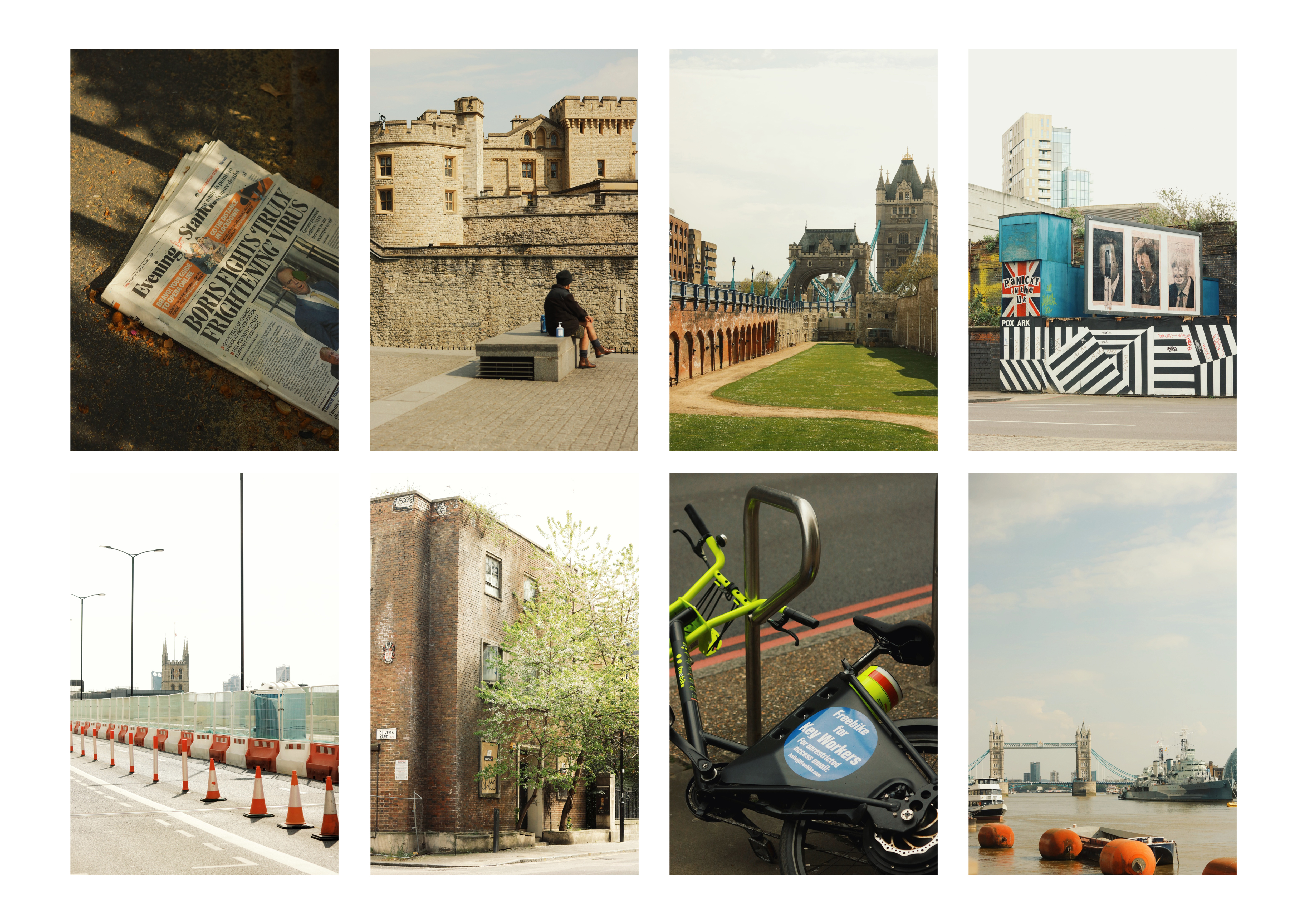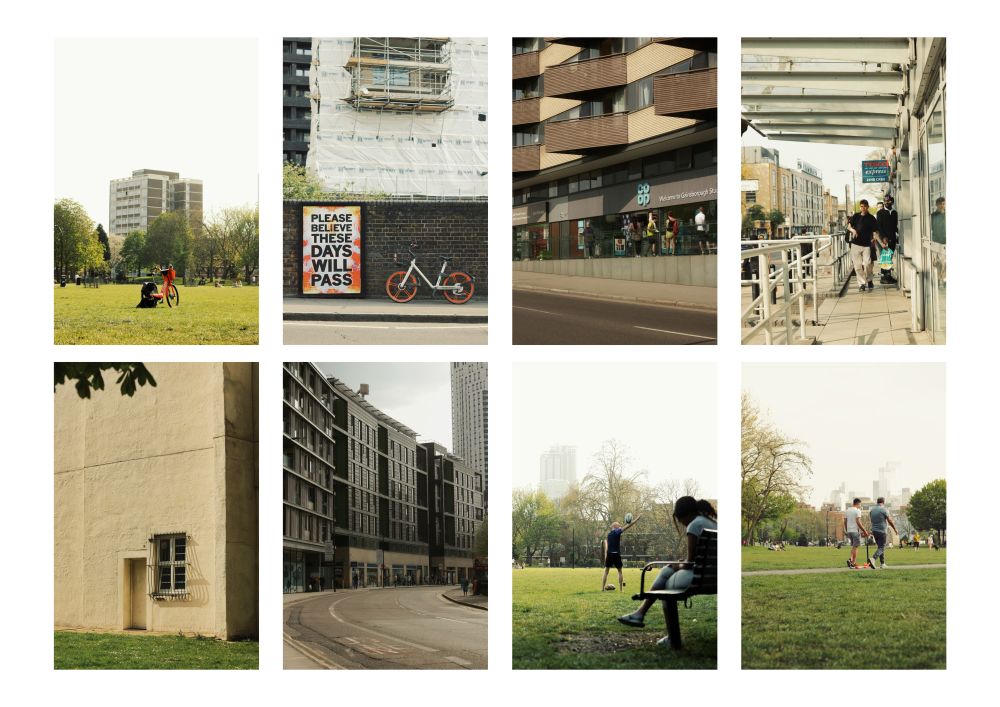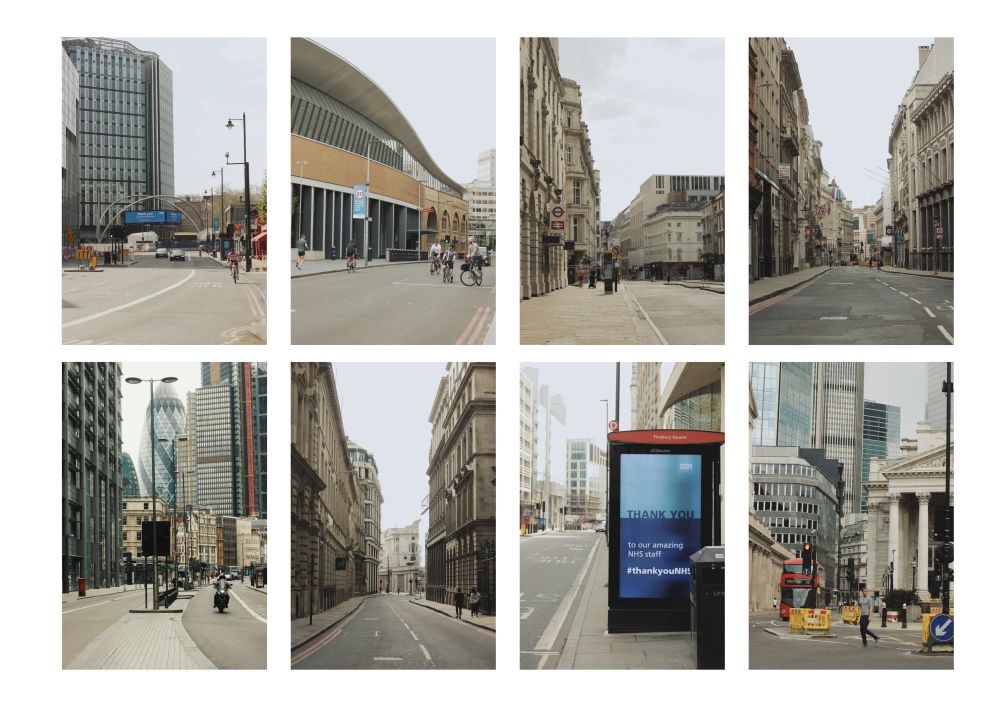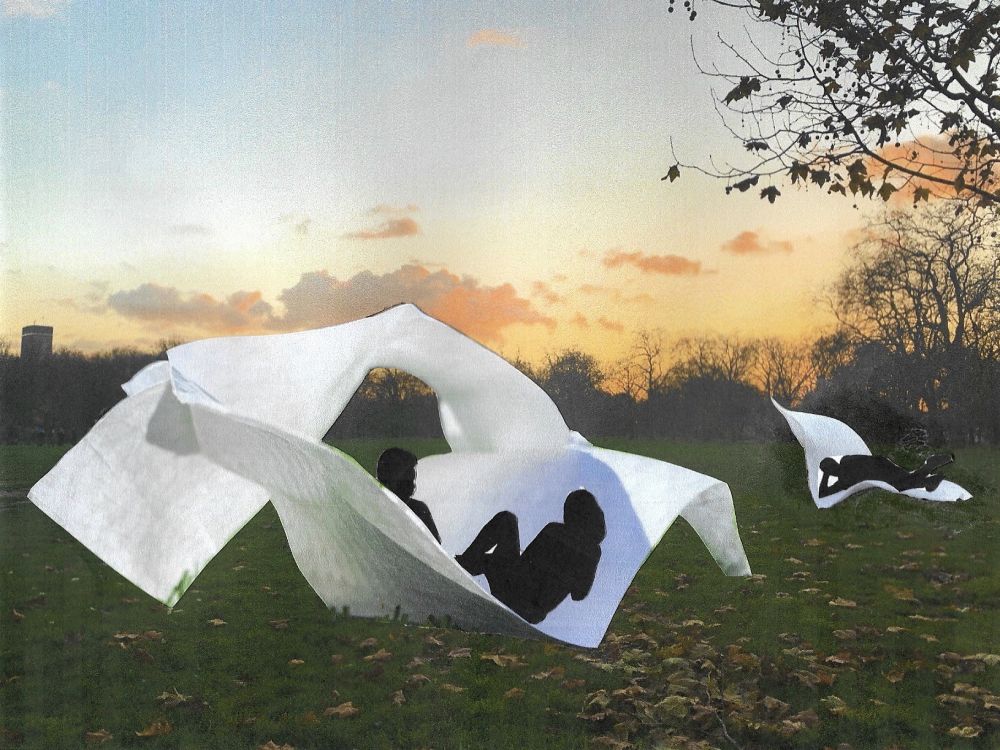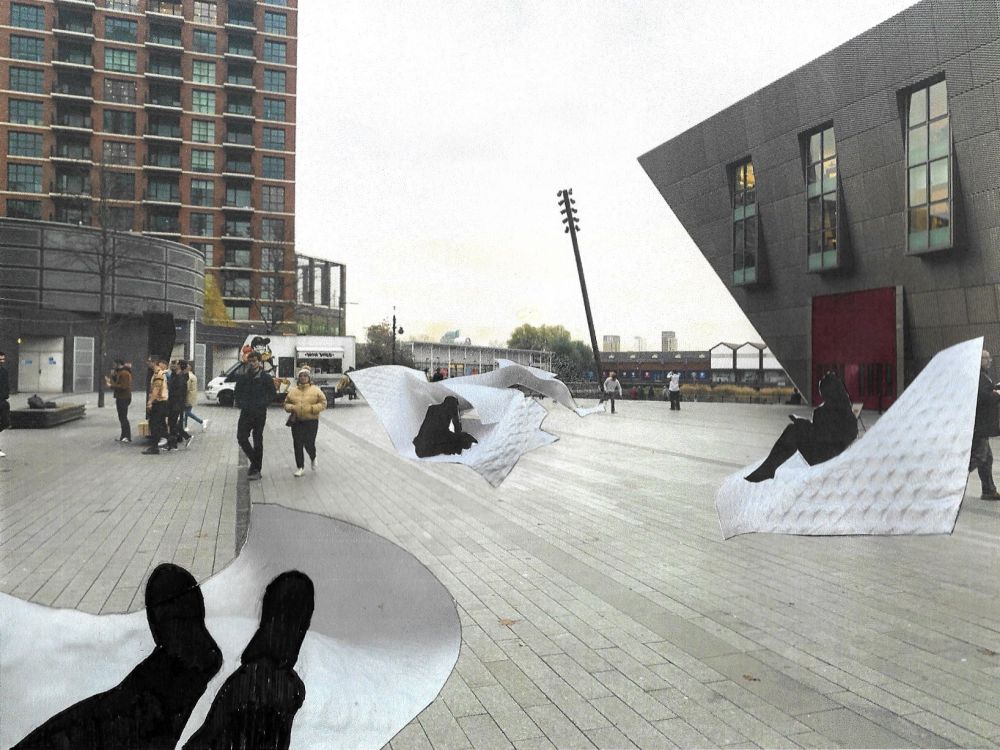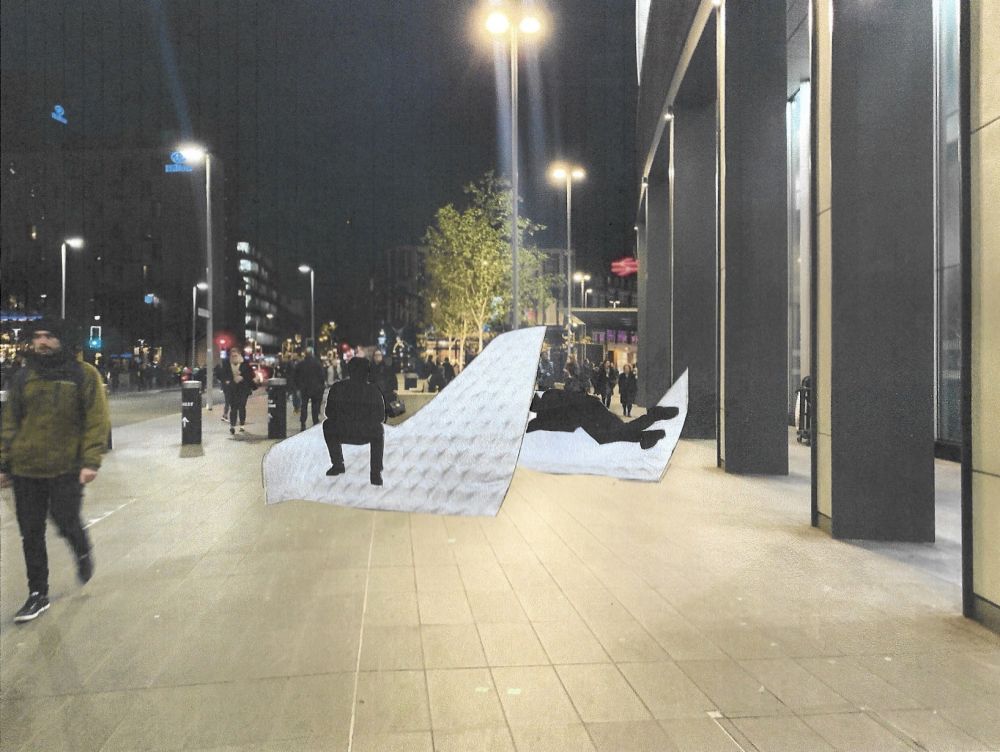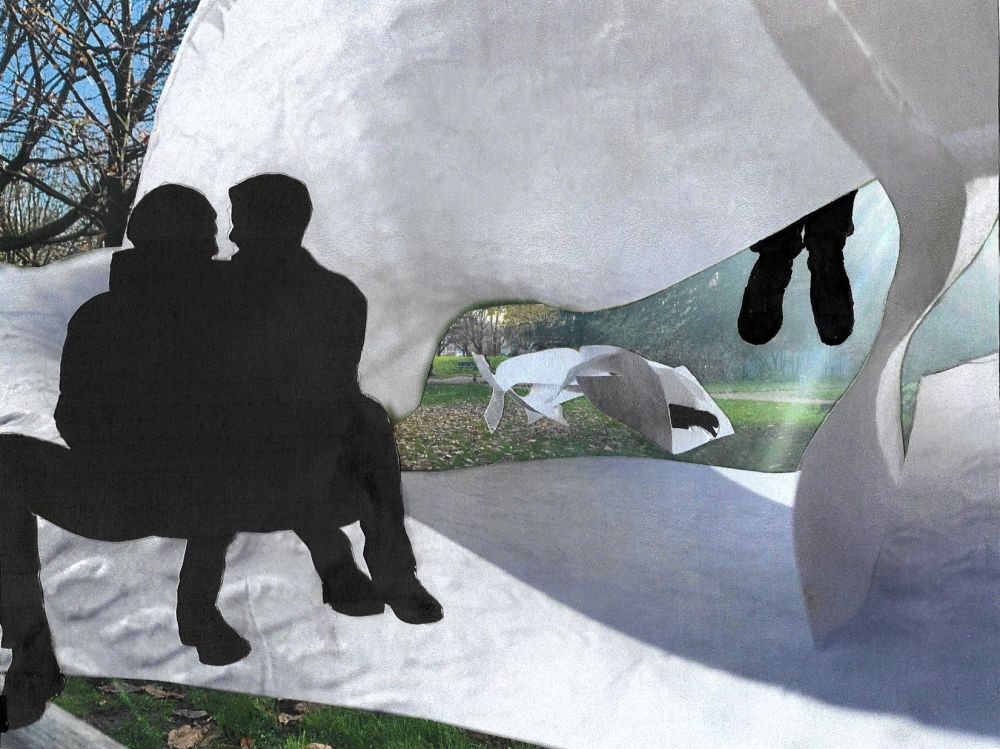Due to the coronavirus lockdown, many of our Foundation students finished their studies away from the College. Dispersed all over the world, they have found themselves in a wide range of situations, which have often presented new and complex challenges. Looking across disciplines, here we share some projects which explore the meaning and impact of social isolation.
For her project Ghost Town, Graphic Communication Design student Lucy Badger subverted the idea of isolation as an indication of lack of activity. Instead, she began to explore it as an experience in and of itself. She created Stay Home airlines, illustrating ‘on-board’ safety instructions and boarding passes – allowing all passengers to travel ‘from outside to inside.’
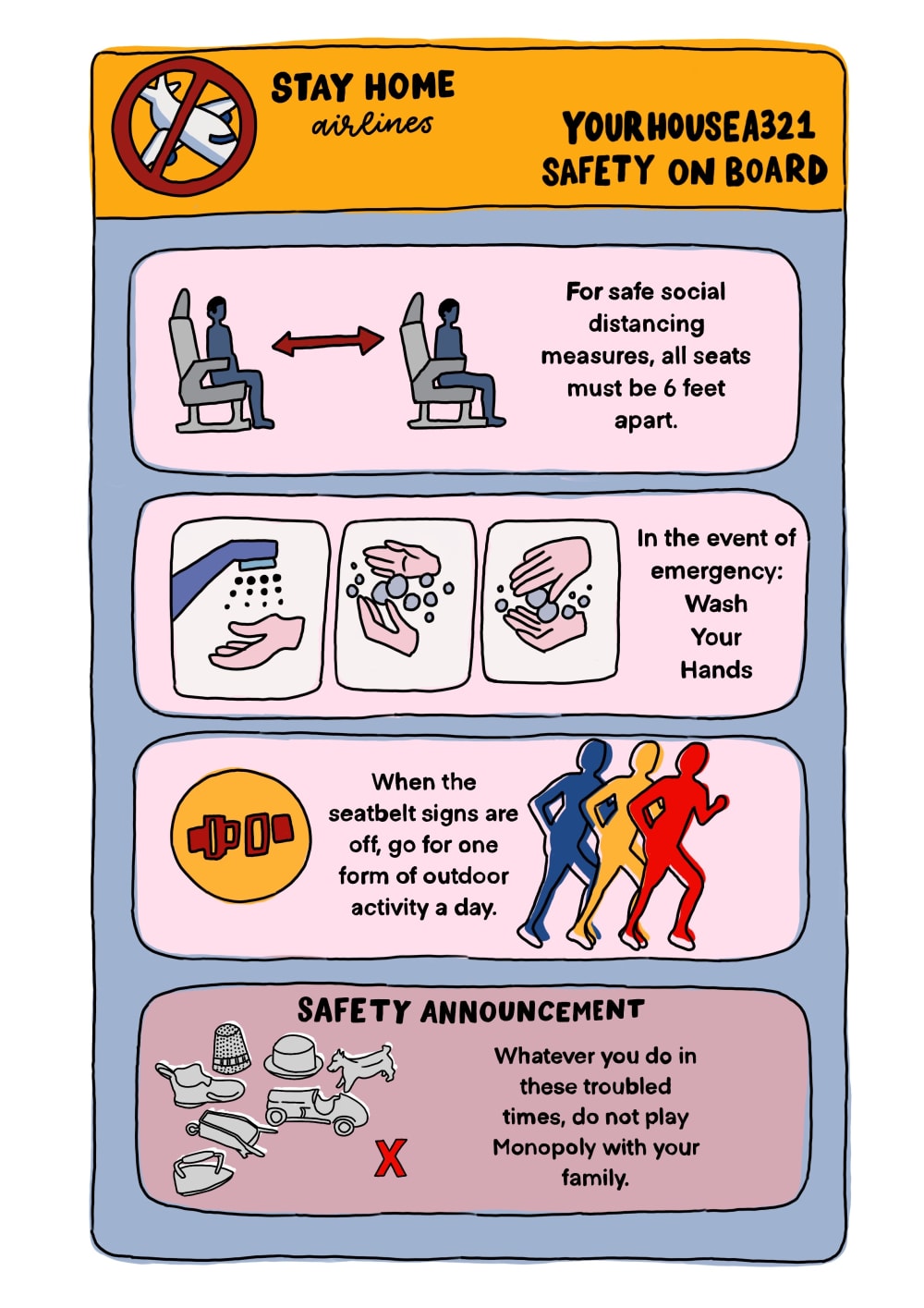
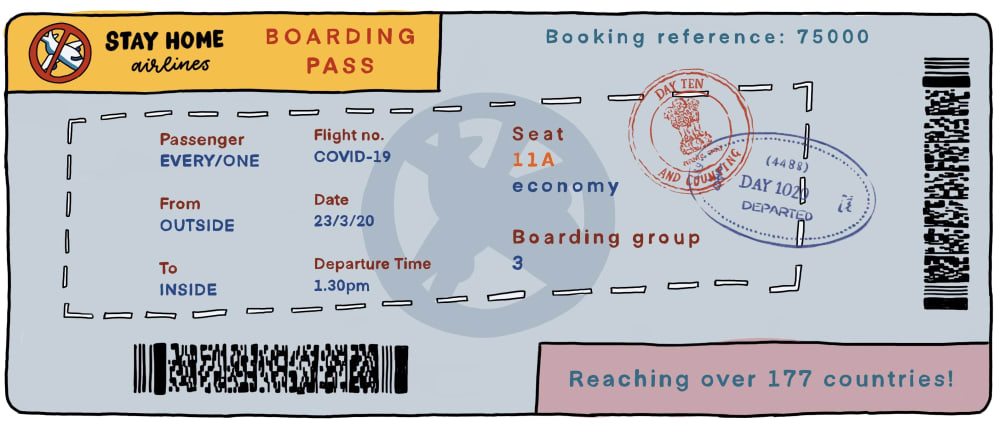
“Initially my work was about revisiting the town of my ancestors, Dunmore in Ireland,” Badger explains. “I intended to explore the rich culture and atmosphere of the place and to communicate the social, political and economic struggles that the town has faced in recent years.
When flights to Ireland were cancelled and we went into lockdown, I began thinking about the significance of staying in one location. I became interested in the idea of branding the entire concept of self-isolation as a travel experience.”
Sophie Jouvenaar, London: Playground for the Unseen
While Badger has re-framed the experience of remaining at home, fellow Graphic Design Communication student Sophie Jouvenaar has taken a series of photographs which document life outside the home during lockdown. Her photographs, shot in London over a period of two days in April, explore how the pandemic has affected the capital’s streets.
“The images also document our attitudes towards one another and the outside world. Everybody is eyeing each other with an air of suspicion – the feeling of unease seeming to ooze from the cracks in the pavement and to spill over windowsills and balconies into the empty streets.” – Sophie Jouvenaar
Riho Watanabe, Homelessness
3-Dimensional Design and Architecture student Riho Watanabe had turned to the impact of isolation as a subject even before the pandemic hit. Addressing the issue of homelessness, Watanabe discovered lack of safety and comfort was one of the most prominent issues linked to social isolation. Her structural proposal provides shelters in community spaces to encourage social interaction: “Physical contact between individuals is a key way to provide comfort, as it reassures and offers security. Based on the form of the human body, the outcome is an undulating multifunctional modular structure designed around the need for physical contact.”
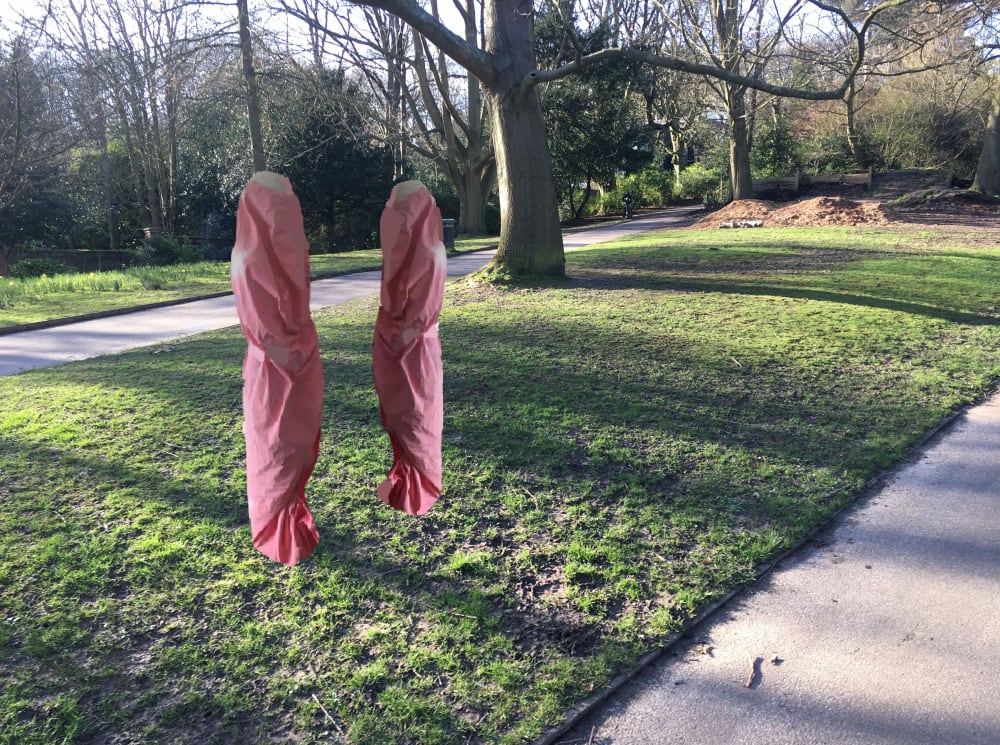
Fine Art student Athena Anastassopoulos’ project Seeing with the skin has taken on an additional context during the pandemic. Using thermochromic fabric, Anastassopoulos has been working with breath as a material.
“The social distancing measures have fuelled my process, prompting me to visually track the spread of breath and consider how we can control the air. I wonder whether a piece of sculpture would provide the intimacy of human touch, offering comfort or easing a feeling of loneliness. Conversely, with the temperature and texture of a human body, might such a sculpture simply disturb the viewer?”
